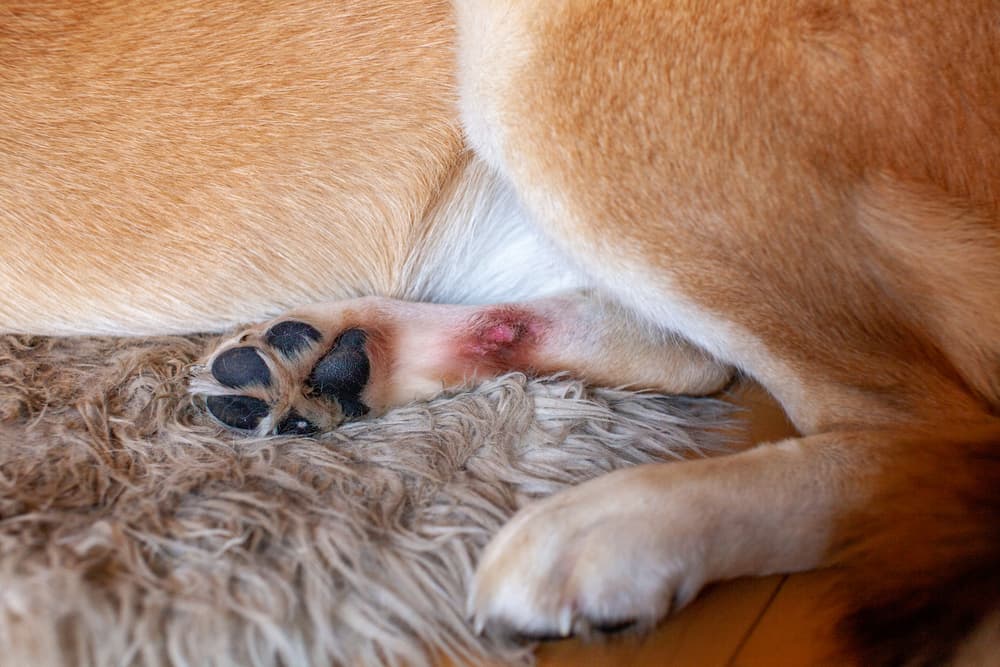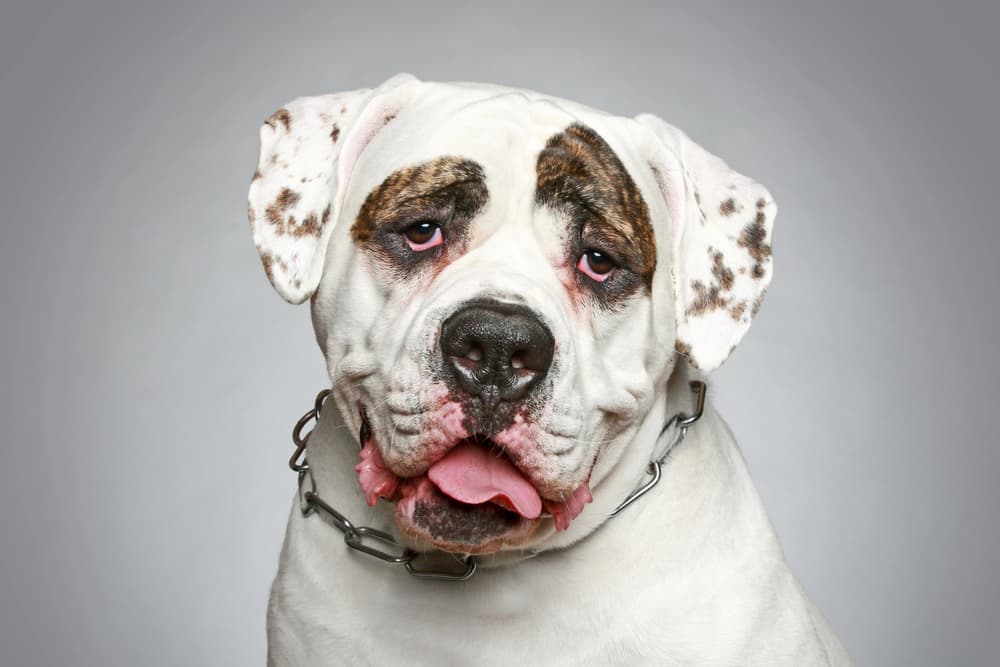
Hot Spots

Our guide has been authored by qualified veterinarians, but should not be taken as substitute for medical advice or professional veterinary consultation. If your pet displays any unusual symptoms, we strongly advise seeking guidance from a veterinarian
Understanding Hot Spots in dogs
Hot spots (also known as “acute moist dermatitis”) are a common skin condition in dogs, appearing as an inflamed, moist and red bald patch, often on the dog’s lower back, tail base, thighs, limbs, or face. In most cases, hot spots result from self-trauma, such as excessive licking, biting, or intense scratching, leading to a local infection, inflammation, and wound. Since there’s typically a root cause for hot spots, the chosen treatment should address this cause in addition to healing the infection and wound.
Hot Spots's Causes: Uncovering Triggers
As we’ve mentioned, hot spots often stem from self-inflicted skin trauma caused by excessive licking, biting, or scratching. The possible causes leading to this behavior are:
- Fleas cause intense itching, and for many dogs, the saliva in their bites triggers a severe allergic skin reaction known as Flea Allergy Dermatitis (FAD). These hot spots typically appear above the tail base or on the dog’s outer thighs.
- Allergies, whether environmental or food ones, can lead to irritation and inflammation in the ears or around the rear.
- Ear infections can cause itching-caused secondary hot spots under the ears.
- Foreign bodies like foxtails that penetrate under the skin.
- Swollen or blocked anal glands might lead to self-biting around the rear.
- Skin conditions like pyoderma (bacterial skin infections) can cause excessive itching.
- Chronic arthritis or, in rare cases, cartilage or bone tumors, can cause excessive licking around the joints.
- Neglecting to brush and care for the dog’s coat, especially in breeds prone to matting.
- Anxiety or severe boredom can lead to compulsive behaviors, including excessive grooming.
 Recognizing Hot Spots: Signs and Symptoms
Recognizing Hot Spots: Signs and Symptoms
- Bald patch with inflamed skin: this is the typical symptom. It’ll often be accompanied by a moist discharge that sometimes has a foul odor.
 Hot Spots Diagnosis: How it's Identified
Hot Spots Diagnosis: How it's Identified
- The dog’s fur may be hiding a significantly larger affected area than it appears, so it’s recommended to shave the area at the clinic thoroughly.
- Samples can be taken for microscopic examination (known professionally as cytology) to detect inflammatory cells and bacteria.
- Depending on the suspected underlying issue, additional tests may be recommended, including examining the fur for parasites, checking the dog’s anal glands, X-rays for potential orthopedic issues, or a food allergy diet trial.
 Treating Hot Spots: Options and Approaches
Treating Hot Spots: Options and Approaches
Treating the hot spot itself:
- Shaving and cleaning the area to enable optimal topical treatment- usually done at the clinic.
- Topical treatments, such as ointments, sprays or shampoos with antimicrobial, anti-inflammatory, and anti-itch ingredients.
- Systemic, short-term anti-itch treatments administered orally. These may include medications like Apoquel or steroids.
- Antibiotics, topical, or systemic in cases with a significant bacterial infection.
- Elizabethan collar (“cone of shame”) to prevent constant licking, scratching, or biting that might hinder healing.
In addition, these steps may be needed to address the underlying cause:
- Effective anti-flea/parasite treatment.
- Anal gland expression and treatment for possible inflammation.
- Ear infection medications.
- Medications or nutritional adjustments for atopy or food allergies.
- Anti-inflammatory or pain relief medications for joint-related issues.
- Anti-anxiety treatments for hot spots stemming from a behavioral cause.
Hot Spots: Surprising Facts

Hot spots are among the five most common reasons for visits to the vet.

The most common cause of hotspots is flea allergies.

Hot spots on the face typically require more intensive treatment compared to those on the rear part of the dog’s body.
 Vet's Tip: Dealing with Hot Spots
Vet's Tip: Dealing with Hot Spots
A common misconception is that there’s no need for year-round flea prevention. In reality, fleas are present in many areas at least 10 months out of the year. Hot spots caused by flea bites often appear during the “colder” months because owners neglect proper prevention during this time. For this (and many other reasons), year-round flea treatment is recommended.




Price Tag

Latest in Research and Treatments
Like many other conditions, treating hot spots often involves unnecessary systemic antibiotic use. In many cases, especially in the lower back area, anti-itch medications have led to recovery without the need for systemic antibiotics. Topical antibiotics can be an effective option for minor infections. Even when systemic treatment is required, long-term protocols of two weeks or more may no longer be necessary, and a shorter treatment of three to five days, or until the infection signs disappear, is sufficient.
dogs breeds Prone to Hot Spots
Did you know?
Enrolling in Animalia Pet Insurance
while your pet is healthy is a wise decision.
Waiting until a disease develops means it won't be covered.












